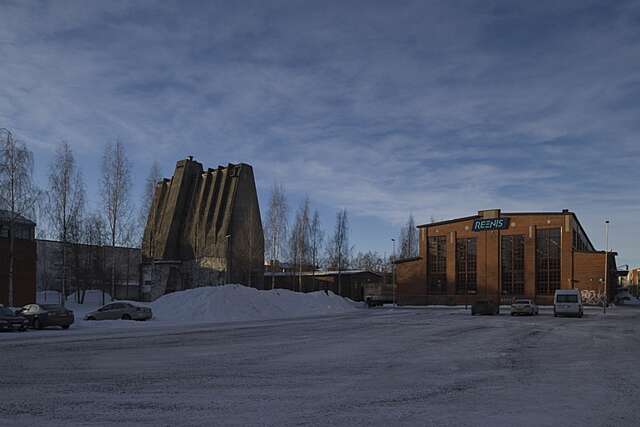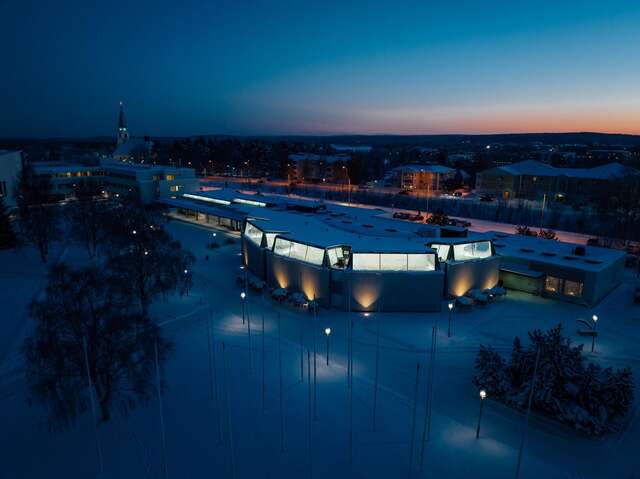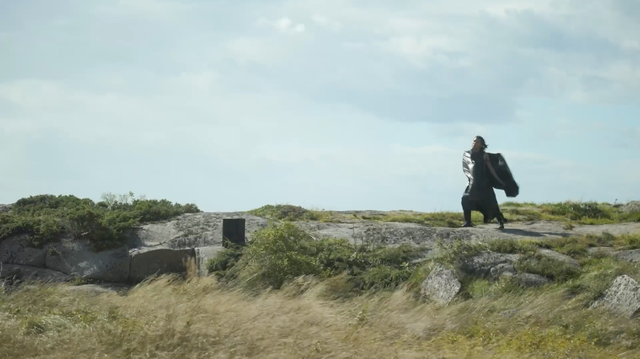Finnish Architects in the Spotlight: ALA Architects
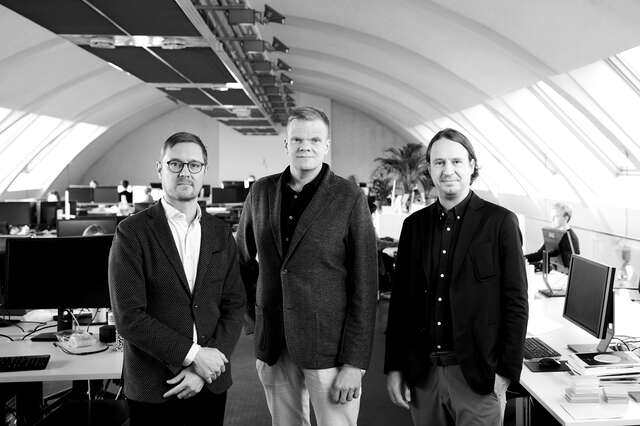
Samuli Woolston, Juho Grönholm, Antti Nousjoki. photo: Vilhelm Sjöström
The new extension to the Helsinki Airport was awarded the 2022 Finnish Wood Award. The impressive and volatile wood texture has already become a trademark of ALA Architects, but the firm's diverse range of work extends from underground metro stations to high-rise towers.
From December 2021, air travellers arriving in Helsinki have got their first taste of Finland in a terminal building designed by ALA Architects. Passengers are greeted by a piece of Finnish nature with trees and boulders. On the upper floor, a spruce-tree ceiling overhangs the spacious departure hall. The architects describe the building in their FinArchSpotlight photo series:
We wanted some romance and sense of adventure to be felt at the airport. The departure hall is the entrance to the wide world for us Finns but simultaneously also a gateway to Finland for everyone else. The vast timber ceiling covering it, is cut to trace the forms of the epic landscapes in Lapland. But the landscape is upside down, and the lake is right above us – or is it a skylight?
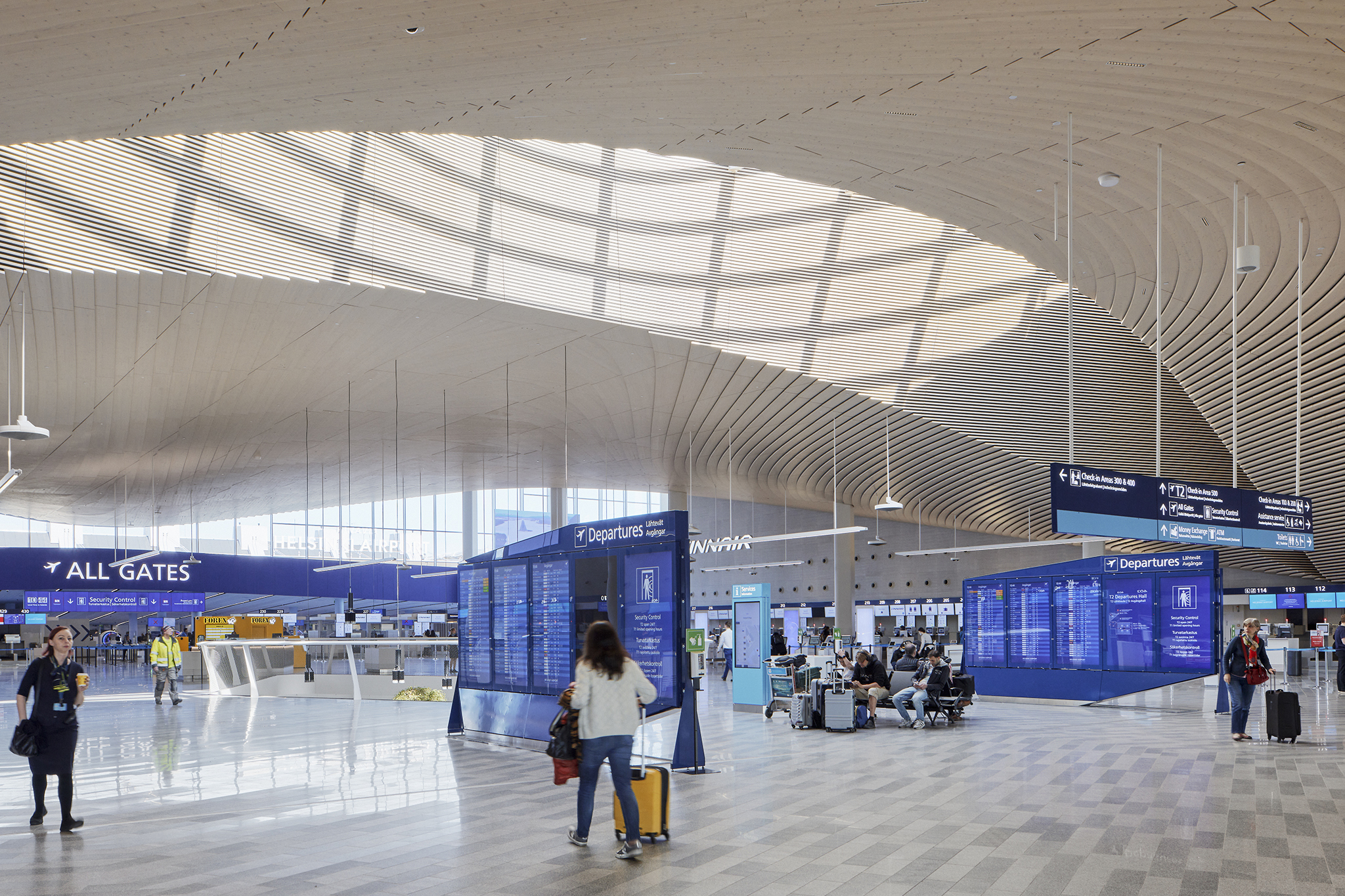
ALA's story began with Kilden, a theatre and concert hall in Kristiansand, Norway. In early 2005, the proposal by Juho Grönholm, Antti Nousjoki, Janne Teräsvirta and Samuli Woolston was named the winner of the architectural competition, which resulted in the founding of the practice, which has since become one of Finland's most successful international architecture firms.
It is not very common for a young Finnish practice to make a breakthrough directly on the international stage. Kilden, which opened in 2012, is not only located in Norway, it also immediately brought ALA to international attention. From the very beginning, the office has also actively sought to operate outside Finland's borders.
The next achievement, which received great international attention, was winning the Helsinki Central Library Competition in 2013. Completed in late 2018, Oodi has been admired around the world both for its architecture and as an example of the library of the future. For Helsinki residents, however, it is very much of the present day: Oodi receives more than three million visits a year, or at least it did before the covid era.
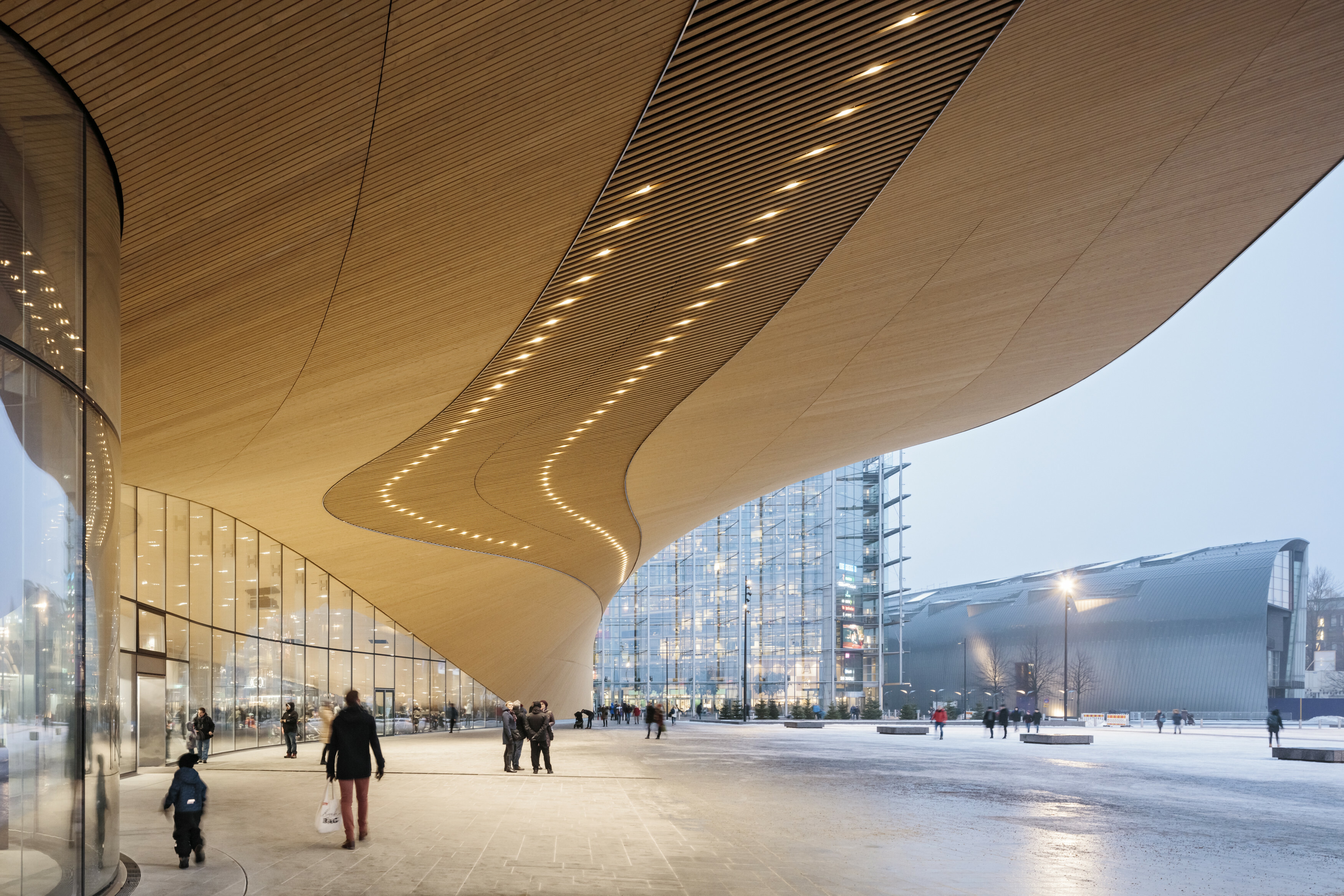
Today, the office, which has grown to almost 50 people, is run by three partners, Grönholm, Nousjoki and Woolston. Best known for its cultural buildings, ALA works on a surprisingly diverse range of projects, all united by ambitious architecture. In addition to the airport terminal, Kilden and Oodi, the agency's portfolio includes the Kuopio and Lappeenranta City Theatres, the Marriott Hotel in Tampere, the renovation of the Dipoli building and the Finnish Embassy in India designed by Raili and Reima Pietilä, and five stations along the western extension of Helsinki Metro.
The opening of the new western extension of Helsinki Metro will take place on December 3rd. The architecture of the stations was designed to be appealing so that people would leave their cars at home and use public transport. The stations designed by ALA want to celebrate everyday mobility:
We have designed five of the thirteen new stations along the western extension of Helsinki Metro. These large, mostly subterranean architectural pieces form a sequence of enjoyable respites in the busy lives of the thousands of people who use them on a daily basis. Each station is a visual echo of what happens above ground in that location.
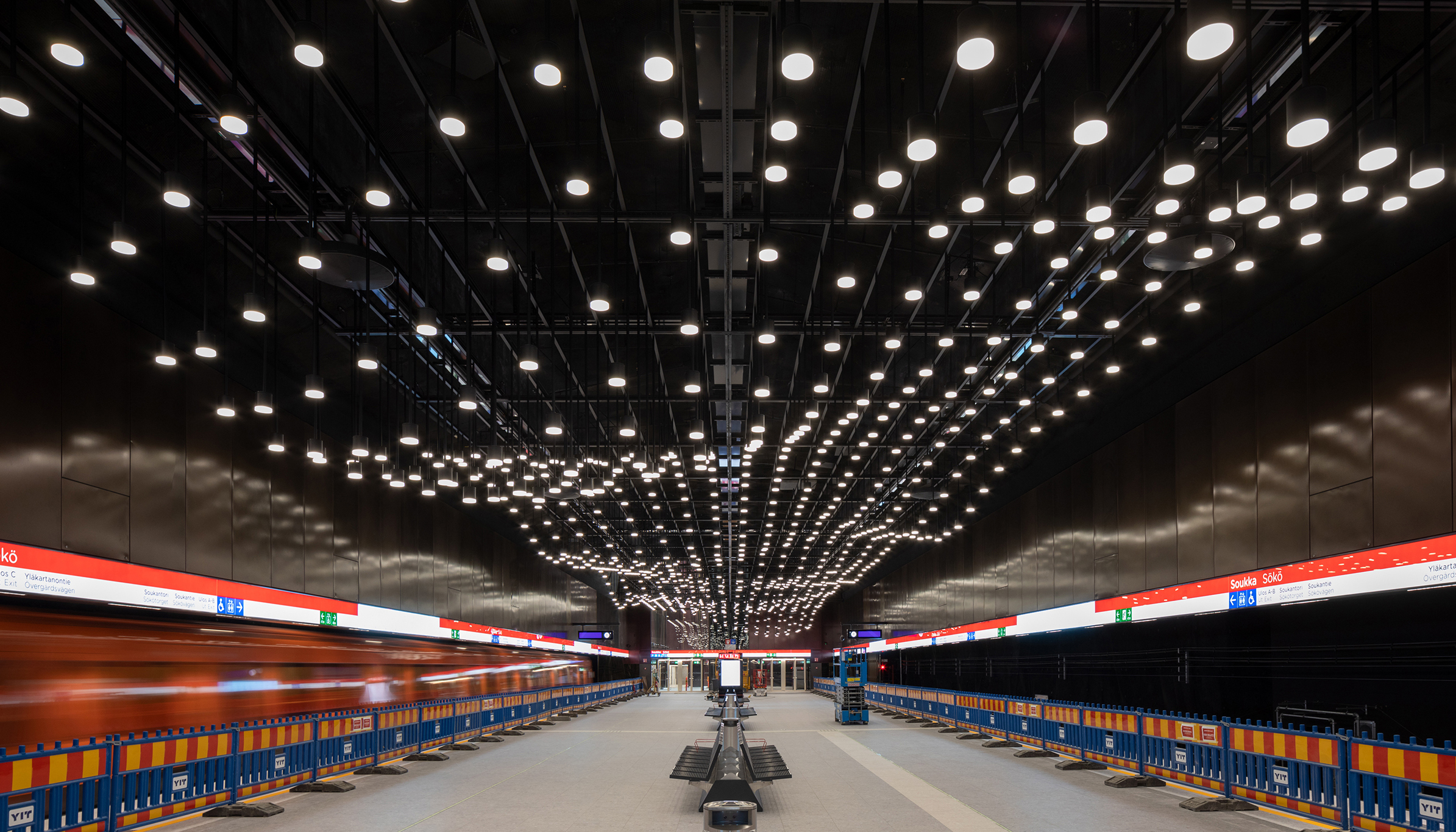
Thanks to its long list of references, the firm is increasingly invited to participate in international architectural competitions. One of these is the Lumière University Learning Centre in Lyon, France, which is due to start construction next year. Also on the drawing board are a 30-storey tower for the Estonian Business School in Tallinn and projects for several Finnish embassies.
But back to the wood. The extension of Helsinki Airport won the Finnish Wood Award in November. The building's main façade is embellished by a huge canopy with a wooden underside. The wooden ceiling continues inside the departure hall. Wood was also considered as a load-bearing structure for the roof, but this did not prove to be a viable option. However, also the roof slab elements of the airport extension – as well as those of Oodi – are made of wood.
"Wood has an appeal as a material, it's pleasant and familiar. All wood used in buildings sequesters carbon permanently, whether it's processed timber on exposed surfaces or cavity slabs hiding in roof structures. It makes particular sense to use wood where it can be used to its full potential. There is also a place for load-bearing timber structures, but the use of timber must be justified in every way, including structural and economic criteria," says Antti Nousjoki.
The bearing structure of the upper floor of the Lumière University Learning Centre in Lyon is designed entirely of wood, but it is more rational to build the lower storey as a concrete base, which is partially sunk into the ground. The roof if supported by wooden beams, which are structurally tied back to the wooden columns rising from this concrete base.
"Wood is beautiful and pleasant to touch. Wood adds a softness to the building. The Uuniversity Llibrary project in Lyon is being carried out with limited resources, and the use of wood supports this objective. Wood is a source of joy in this project," says Samuli Woolston.
Event Centre Satama under construction in Kotka, on the other hand, is almost entirely made of wood. The most impressive part of the building is its lobby, which is represented by a sail-shaped suspended wooden roof:
"The event space is one gigantic, fully adaptable wooden box. One of its walls seems to roll up, forming a literally hanging timber structure over the foyer. This warm sail invites people inside, while the solid zinc cladding protects the building from the harsh harbour weather."
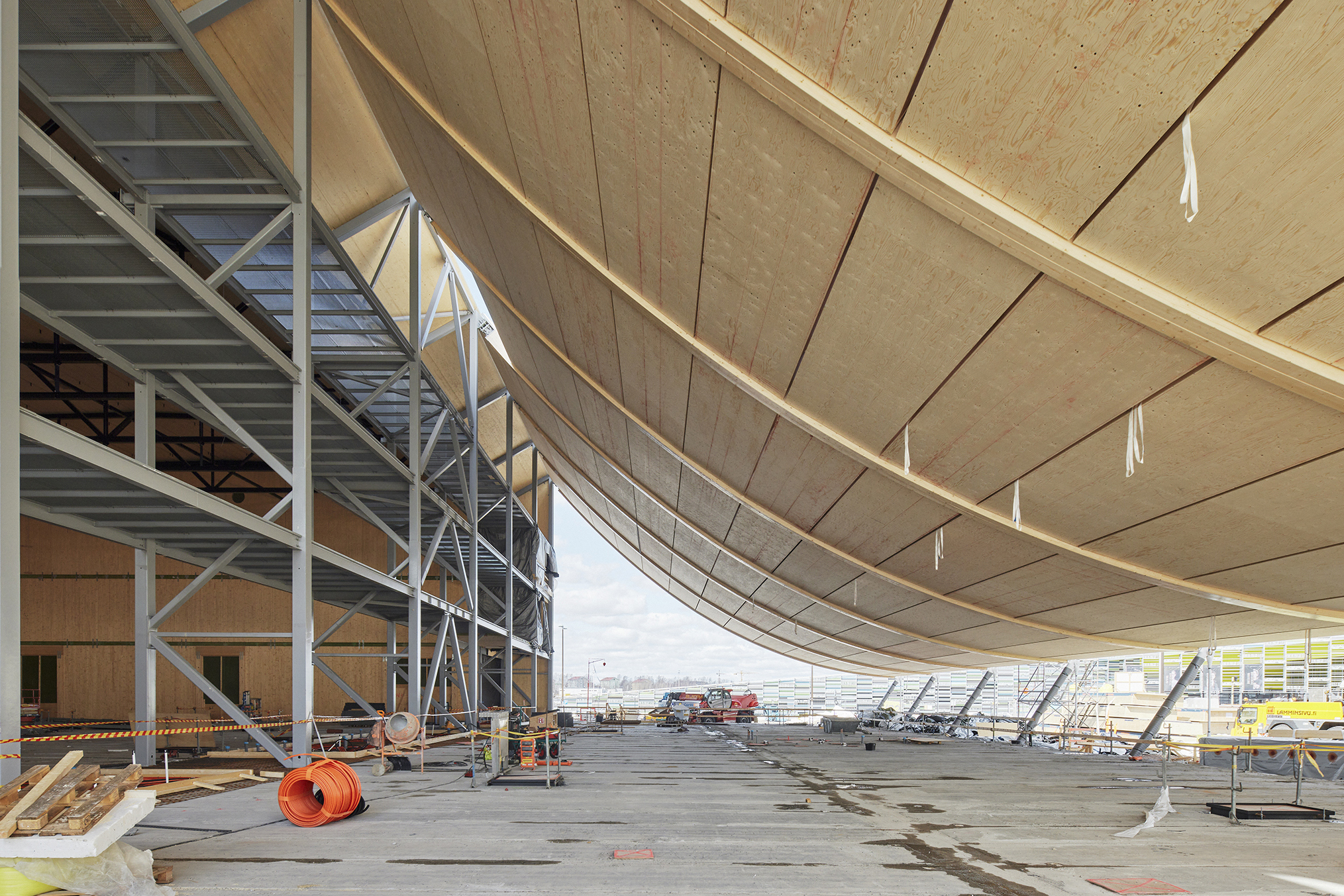
"There were ambitious targets set for the use of resources in this project. With the suspended structure it was possible to achieve much smaller structural thicknesses than with beams. The City of Kotka also wished for a timber structure already in the land-use plan, this however, was not a requirement for the contract," says Juho Grönholm.
Visitors will be able to see Event Centre Satama in August next year when it opens its doors. Before that, you can follow the construction work from the site camera, which is updated every minute - day and night.
Read more about ALA Architects’ work on their site: ala.fi.
Finnish Architects in the Spotlight invites architects or architectural practices to share their values and design principles through images and short texts. See ALA Architects’ photo series on Instagram through this link.
All posts featured in the Finnish Architects in the Spotlight series can be found by using the tag #FinArchSpotlight and all articles through this link.
